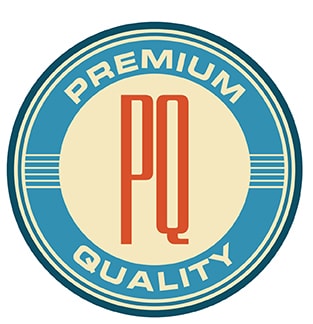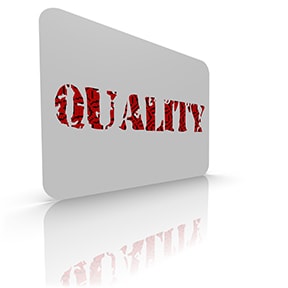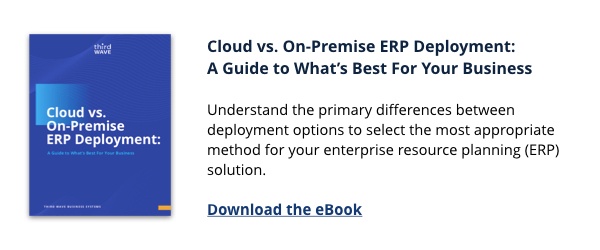If you’re considering upgrading to the latest version of SAP Business One, now is the best time with all the new features and functionality added to 9.1. In this blog series, we’ll highlight all of the exciting new changes. This post explores the changes in Financials.
Multiple Branches
With this feature, you can work across branches on one company database, but only with authorized data. Major functions of this feature include:
- Documents are created for specific branches and only with master data, for example, warehouses and business partners that are assigned to the branches.
- Different branches share some common data and settings, for example, items and document settings.
- You can create purchasing documents based on sales documents
Fixed Assets
The fixed assets function has been enhanced, and you can now perform the following:
- Cancel Depreciation Runs: In the Depreciation Run window, you can cancel a depreciation run by right-clicking the mouse and choosing Cancel. As a result, the posted depreciation of this depreciation run is reverted correspondingly. In addition, the journal entries which were generated based on this depreciation run are then reversed automatically.
- Carry Cost Accounting Information from Marketing Documents: In the Retirement and Manual Depreciation windows, you can choose to carry the project and distribution rule related information retrieved from the marketing document. This information is further carried to the journal entries that are generated based on the retirement or manual depreciation.
- An option to create journal entries for asset transfers at any time has been added: On the Per Document tab in the Document Settings window, you can select the Always Create Journal Entry for Asset Transfer checkbox for Fixed Asset Transfer documents. The application creates a journal entry to record each asset transfer that is carried out at any time as required, even if the same account is used for both the source asset and target asset.
To find out more about SAP Business One 9.1, watch for the next blog post or contact Third Wave.

New Features of SAP Business One 9.1: Financials
Learn More
For most small businesses and midsize companies, there is no  substitute for building satisfying customer relationships. When you are in sync with your customers, you can develop insights into their requirements, tailor products and services to meet those needs, and create customer loyalty that drives profits.
substitute for building satisfying customer relationships. When you are in sync with your customers, you can develop insights into their requirements, tailor products and services to meet those needs, and create customer loyalty that drives profits.
What are the top strategies that can help companies like yours satisfy customers and entice them to buy your goods and services?
Strategy #1: Know What Customers Want – Even Before They Do
One effective way to engage your customers is to anticipate their needs. When a customer routinely purchases your products, you should be able to identify patterns in buying behavior. From these patterns you can determine which actions to take to optimize customer satisfaction.
For example, if a customer often orders 50 new widgets at the beginning of each quarter, you should have those products in inventory to meet his or her needs. If a new quarter begins and the customer doesn’t place the usual order, your sales team should contact the customer. A sales representative can offer to fill the regular order, meet any new product needs, or address previously unrecognized service or satisfaction problems. By working proactively, your company can drive sales and perhaps prevent your customer from taking business to a competitor.
An enterprise resource planning (ERP) solution can help you not only fulfill current needs but also predict future requirements. You can use an ERP solution to gain a better understanding of which goods customers purchase, the timing and frequency of their purchases, and the profitability of each customer. A solution that provides a 360-degree view of the customer account – including sales, marketing, and service interactions – can help you manage customer value and deliver differentiated service. Software can recommend next-best offerings for your customers and personalize these offerings based on marketing profiles or target groups.
Watch for our next blog in the series!

5 Steps You Need to Take to Keep Your Customers, Part I
Learn More
Having the right software and technology is essential to growing a business – yet many companies feel the constraints of inadequate systems. Outdated applications, manual processes, and countless integration challenges consume time and resources. So how do you know when you’ve reached the tipping point? This blog series will take you through the top 5 signs you’ve outgrown your systems.
Sign 1: Recurring Headaches About Reporting
As your organization grows, data, calculations, and transactions also grow, in both volume and complexity. If your decision makers must constantly make decisions based on incomplete or inaccurate data, or delay decisions until full and accurate reports become available, then critical business decisions are compromised.
Timeliness and accuracy of data have a direct impact on the ability to make better-informed decisions, reports analyst firm Aberdeen Group. The group also notes that best-in-class companies are taking strides to reduce time to information, generate a common view of data, and arm business decision makers with high-quality data to support enhanced business performance.
Aberdeen Group reports that 75% of best-in-class companies are able to edit, share, store, and finalize content to provide users across multiple business units with the tools and information to do their jobs1 – making timely reporting a key component of best-in-class operations.
To alleviate headaches about reporting, organizations must replace “gut feel” choices with fact-based decisions by providing visibility into key business results. Rapidly growing small businesses and midsize companies can improve reporting and increase visibility by replacing multiple spreadsheets and data reconciliation with a single integrated solution that provides timely access to accurate information and business intelligence.
Sign 2: Numerous Integration Hassles
A second sign that you’ve outgrown your current systems and infrastructure is significant time spent integrating disparate systems and aligning data from multiple sources. If your company has grown through one or more acquisitions or is running different systems in various areas of operation, you may be spending too much time troubleshooting and maintaining integration points – and not enough looking for opportunities to reduce costs and improve productivity.
Over half of the small and midsize companies participating in an independent Forrester Research survey reported the “ability to integrate with other systems” as a very important criterion when selecting potential software.2 Forrester also listed “improving integration between applications” as one of the top four business goals of IT departments.
A single comprehensive application can handle all key business activities, eliminating the complexity and expense of integrating multiple systems. You spend less time on system maintenance and more time planning and implementing innovative functionality. With fewer integration points, a company can focus on systematic reviews of business processes, identifying and prioritizing opportunities to cut waste, redundancy, and costs.
Sign 3: Rigid Systems That Limit Flexibility
Your company is poised to push into new markets, introduce fresh products and services, and bring on new personnel. But expanding into a new region or product line means dealing with a rigid system – and substantial IT effort. Without proper support, initial results are not up to par with what they should be. Line-of-business managers don’t want to postpone their operations for system support, new employees can’t access data they need to fulfill their duties and IT is caught trying to figure out another workaround.
You need a solution versatile enough to grow with you – a highly configurable and easy-to-use system that adapts quickly to your organization without the need to purchase or integrate additional software. Supporting new languages and currencies should ensue with the click of a mouse, not after hours of coding and personalization. A solution with a modular design makes it simple to focus on your most pressing needs by starting small, and then add users and functions as your organization grows.

Top 3 Signs You’ve Outgrown Your Current Systems
Learn More
As we discussed in our previous blog post in the “How to Secure a Successful Implementation of  Your SAP Software” series, achieving extraordinary business transformation requires careful planning and a commitment to the 10 principles of quality. These 10 principles enable your organization to not only establish predictability in your project, but transparency as well.
Your SAP Software” series, achieving extraordinary business transformation requires careful planning and a commitment to the 10 principles of quality. These 10 principles enable your organization to not only establish predictability in your project, but transparency as well.
The following are the next two Principles of Quality:
4. Ensure Timely Delivery and Effective Tracking – Agree on scope and ascertain that the resources available and timeline are sufficient to complete the deliverables at the agreed-on level of quality. All parties must sign off on the timeline, deliverables, and acceptance criteria and be aware of the pace required to avoid impacting the overall timeline. Any subsequent adjustments made to project scope or timeline must be considered first in light of business impact and second as to whether they are realistic, relevant, and acceptable. Activities and tools must be in place to monitor time, budget, and deliverables. Key performance indicators for the project should be tracked closely and visible to all stakeholders.
5. Staff Project with Sufficient, Competent, Motivated People – Carefully recruit your project staff and select a partner who will provide you with the right mix of skills and experience. Train team members early so they understand the technical and functional context in which they are working, what design possibilities are open to them in that context, and the impact of their decisions. Throughout the implementation, the skills and competencies of the implementation team members should be reviewed regularly to verify that they continue to meet project requirements. Their commitment and time allocation should be assessed regularly and addressed when inadequate. Also, team engagement and motivation should be assessed and revitalized on a regular basis, with special attention given to members working remotely. Team members should also be made aware of how their role in the current project can contribute to the advancement of their careers.
Stay tuned for next week’s blog on the next two principles of quality and how they aid in a smooth project process. Contact Third Wave today to discuss more!

How to Secure a Successful Implementation of Your SAP Software – The Next 2 Principles of Quality
Learn More
There are numerous reasons why organizations are considering moving to the cloud, including rapid deployment options, improved flexibility, lower costs, and various other factors that may not be as obvious. You want to improve your business agility, but need to do so in a way that ensures value and is cost-effective as well.
Following are the top 10 reasons companies move to the cloud:
- The Ability to Predict Costs and Decrease Total Cost of Ownership: Most of your organizational decisions are fueled by your bottom line. At the end of the day, you want to save as much money as possible.
- Automatic Updates: Applications are updated automatically so you can focus on your core organizational initiatives.
- Reliability: Working with a good vendor will ensure reliability. As with on premise applications, you will have concerns about speed, downtime, and disaster recovery. In the cloud, it is the vendor’s responsibility to address and resolve these potential issues.
- Converting Time to Value: Cloud applications can be up and running in weeks instead of months.
- Adoption: User adoption is extremely important in implementing a Cloud application. In most cases where the application does not deliver the expected results, it’s because of a lack of user adoption, rather than lack of technical features. Making sure your entire staff is on the same page is crucial in the beginning stages of implementation.
- Security: Another key requirement of a Cloud-based application is providing the highest level of security possible, both on physical premises as well as technical security on the access, application, and network levels. Remember, most Cloud vendors can provide a higher level of security than any organization can achieve on its own.
- Compliance: Compliance is critical in business and Cloud applications include some level of updated compliance with each new version of the software.
- Extensibility: Out-of-the-box features and functionality are great, but when you need to be able to configure and customize your apps to your needs, using a Cloud-based application can deliver.
- Scalability: A Cloud-based application addresses operations, capacity, multi-tenancy, and load balancing.
- Integration: In order to get the most value from your data, you need the Cloud-based application to integrate with your enterprise applications as well.
To discuss moving to the Cloud in further detail, contact Third Wave today!

Why Move to the Cloud
Learn More
In our last two blog posts in the “How to Secure a Successful Implementation of Your SAP Software” series, we discussed why quality is important in the early stages and how collaboration can enable you to measure the success of your efforts. These two factors contribute to a seamless implementation of your SAP software, but achieving extraordinary business transformation isn’t just a matter of luck. Doing so requires careful planning and a commitment to 10 principles of quality. These 10 principles enable your organization to not only establish predictability in your project, but transparency as well; regardless if you are implementing an on-premise or cloud solution.
The following are the first three Principles of Quality:
- Anchor Business Value Firmly in Your Project – Think about how many design and implementation decisions are made throughout the lifespan of a project. With so many options and decisions, it’s important that you make appropriate and effective decisions at every stage of the project. All parties involved must clearly understand the project’s strategic importance, its business objectives, and its key success criteria. It is crucial that you not only track these aspects throughout the project, but after going live as well, making sure the solution continues to meet the business requirements. In doing so, you can justify whether or not the changes proposed to the project scope are justified by the business value they may add
- Determine Clear Requirements Early On – In order to implement a feasible, affordable, maintainable environment that delivers adequately, technical requirements must be met. To do this effectively, the application landscape and system architecture must be aligned with your business strategy. Requirements regarding master data flow, integration, security, interfaces, and environment can be analyzed early on to allow for sufficient time to plan the related efforts. By involving business users early on with the collecting process and functional requirements, you can help ensure buy-in to the completed solution.
- Cooperate with Stakeholders and Use a Proper Governance Model – Project team members and stakeholders must thoroughly understand the project’s scope and focus on achieving your business objectives and operational drivers. By utilizing a project charter from the beginning of the project, you can align stakeholders and facilitate the onboarding of the initial team as well as resources added later on. Roles and responsibilities must also be defined in the initial phase so everyone involved understands the team structure, lines of communication, and who has the authority to make which decision.
Stay tuned for next week’s blog on the next three principles of quality and how they aid in a smooth project process. Contact Third Wave today to discuss more!

How to Secure a Successful Implementation of Your SAP Software – The First 3 Principles of Quality
Learn More
In last week’s blog post we discussed why focusing on quality in the initial stages of implementing an SAP solution is important. Remember, a collaborative quality approach creates an engagement framework that involves setting targets to which all stakeholders can commit. But, how do you go about doing this?
Who is the biggest expert in terms of knowing what your organization’s end goals are? However close a supplier gets to an organization, the supplier can never be as much of an expert as someone on the inside. Your employees are your most valuable asset. The best individuals to ensure that a program fulfills your business goals are often outside the IT functioning positions and are quite frequently the key to implementation success. You want to manage implementations in a way that will minimize risk, but it is important to note that the absence of risk does not automatically ensure excellence. Creating a collaborative quality plan is a good way to tie suppliers’ deliverables to the overall success measures of the implementation program.
No two implementations are the same, just as no single collaborative quality program fits all. However, there are a number of tools and best practices that are commonly used in successful implementations and that deliver controls for the internal program owner. It’s all about creating the right environment and a proper plan. For instance, a plan can be as simple as a concise two page document that lists clear actions and ownership for all key areas of success. It is important to recognize that this document will be a constant work in progress and should be updated at all stages of the implementation to keep all parties on track for delivering the overall program objectives. The plan should also describe the framework within which the project management team will implement and evaluate the new software solution. Quality planning involves identifying which quality standards are relevant to the project and determining how to satisfy and verify them. It’s all about making the right decisions.
In order to ensure that the right decisions are always made, a collaborative quality forum can be created, where a formal group of all suppliers and internal parties involved in the program agree on, document, track, deliver, and sign off on the independent items of the collaborative quality plans. In some cases, simply setting up this group increases the likelihood of a successful implementation.
It is clear that collaboration is a necessary step in the beginning stages of the implementation process. Stay tuned for next week’s post where we start to discuss the 10 principles of quality and how they impact your organization. Contact Third Wave today to discuss!

How to Secure a Successful Implementation of Your SAP Software – Collaboration
Learn More
As you embark on implementing a new SAP Business One solution, it’s important to recognize that delivering software solutions that bring significant benefits to the business does not just happen. There are specific criteria to take into consideration as planning and execution go into effect. You are probably asking how you can approach the planning process methodically and as effectively as possible. You want to make sure that you will get buy-in and adoption organization-wide, meet expectations, and achieve a return on investment. You want to focus on quality – quality of the software, quality of the implementation, and quality of individuals associated with it.
How do you measure quality? One way is by checking for adherence to ensure that a project is delivered to specification, within budget, and on time. This is often where quality assurance breaks down in software implementations. Typically, each party involved in an implementation guarantees the quality assurance of their contribution. One example of this could be making sure suppliers deliver what they have agreed to in their contract. It’s important that individual suppliers focus on the results of not only their own project area, but to their role in delivering quality for the overall program/implementation.
In order to ensure that the final delivery of a program successfully fulfills your organization’s business objectives, there is another way to measure quality – by advancing continuous improvement and striving to constantly do things better. You can do this by looking at past examples, learning from them, and involving the right experts to deliver the best possible outcome.
Some problems can arise, however. Often, employees charged internally with program delivery are sometimes new to such challenges and will have a difficult time reacting and deciding how to tackle them. They may have limited time to learn new skills, and, as a result, cannot match the years of experience most suppliers bring to the table.
You need an effective knowledge-sharing forum that will allow the internal project or program owner to make informed decisions against business requirements, while avoiding challenges. A collaborative quality approach creates an engagement framework that involves setting targets to which all stakeholders can commit. These targets can help stakeholders agree on how best to manage all parties involved in an implementation. You want to make sure that both the project team and management maintain program ownership and control of suppliers and internal parties.
You don’t want to put your organization or career at risk over what should be a pretty seamless technology rollout. Contact Third Wave today to discuss how to secure a successful implementation. Stay tuned for next week’s post on why collaboration is important during the implementation process.

How to Secure a Successful Implementation of Your SAP Software – Quality in the Early Stages
Learn More
